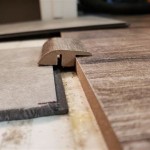Vinyl plank flooring is an affordable, attractive, and easy-to-install flooring option that is perfect for do-it-yourselfers. This type of flooring is designed to be installed as individual planks, but it can also be installed as a sheet if you prefer. In this guide, we’ll provide step-by-step instructions for installing this type of flooring, as well as some tips to ensure it looks its best.
Step 1: Preparing the Subfloor
Before you begin, you’ll need to make sure the subfloor is ready for the vinyl plank flooring. The subfloor must be completely level, free of debris and dust, and dry. If it is not level, use a self-leveling compound to make it level. Also, make sure the subfloor is clean of any debris, dust, and dirt. Finally, make sure the subfloor is dry. If you have a moisture issue, you’ll need to address it before you begin the installation.
Step 2: Measuring and Planning
Once the subfloor is ready, you’ll need to measure and plan the layout of the floor. Measure the room and make sure you have enough vinyl planks to cover the space. You’ll need to plan the layout of the floor and decide where the planks will go. Make sure the planks are evenly spaced and that they fit together perfectly. You may need to cut the planks to fit around any obstacles in the room.
Step 3: Installing the Underlayment
Next, you’ll need to install the underlayment. This is a thin layer of padding that provides cushioning and helps reduce noise. Make sure the underlayment is properly installed and that there are no gaps. This will help ensure the vinyl planks adhere to the subfloor correctly.
Step 4: Installing the Planks
Once you have the underlayment installed, you can begin installing the vinyl planks. Start by laying the planks along the longest wall in the room. Make sure the planks are evenly spaced and that they fit together perfectly. Once the first row is installed, use a rubber mallet and tapping block to tap the planks into place. You can also use a special adhesive to help secure the planks.
Step 5: Finishing the Installation
Continue installing the planks until the entire room is covered. Once the planks are in place, use a silicone sealant to fill any gaps between the planks and the wall. This will help ensure the planks stay in place and prevent water from getting into the room. Finally, you may want to add a finishing strip along the edges to give the room a finished look.
Tips for Installing Vinyl Plank Flooring
- Make sure the subfloor is level and free of debris before you begin.
- Measure the room and plan the layout of the floor before you begin.
- Install the underlayment before you begin installing the planks.
- Use a rubber mallet and tapping block to tap the planks into place.
- Use a silicone sealant to fill any gaps between the planks and the wall.
Conclusion
Installing vinyl plank flooring is a relatively easy process that can be done by a do-it-yourselfer. By following the steps outlined in this guide and using the tips provided, you can ensure your flooring looks great and lasts for years to come.
:max_bytes(150000):strip_icc()/easy-install-plank-vinyl-flooring-1822808-02-19a3b80cd59943938a401560203706f3.jpg)






:max_bytes(150000):strip_icc()/easy-install-plank-vinyl-flooring-1822808-09-a1f83db7bdf74f279f45594b897de82d.jpg)







Related Posts








